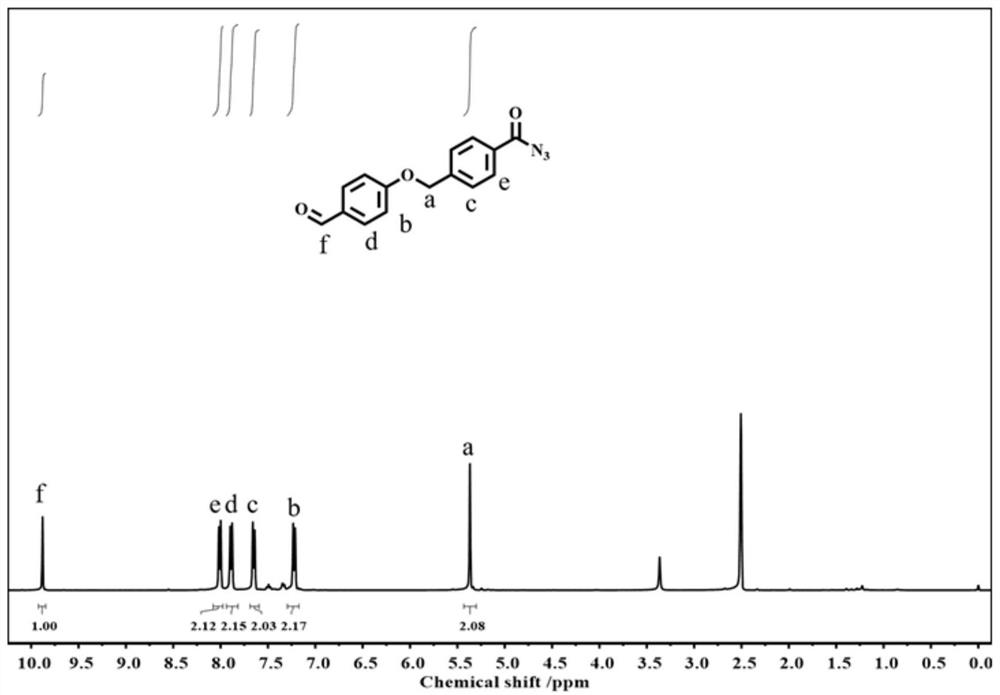Accurate sequence stimuli-responsive polymer as well as preparation method and application thereof
A stimuli-responsive polymer technology, applied in the field of precise sequence stimuli-responsive polymers and their preparation, can solve problems such as less precise sequence structure, and achieve the effects of short reaction time, high yield and high reaction efficiency
- Summary
- Abstract
- Description
- Claims
- Application Information
AI Technical Summary
Problems solved by technology
Method used
Image
Examples
preparation example Construction
[0064] The present invention provides a method for preparing a precise sequence stimuli-responsive polymer described in the above technical solution, comprising the following steps:
[0065] With the material of formula Ⅱ structure and Tag-CON 3 reaction to obtain a precise sequence stimuli-responsive polymer with the structure of formula I;
[0066]
[0067] Specifically, the present invention prepares a stable carbamate-linked polymer intermediate with a determined number of repeating units by using a stimulus-responsive molecule (Trigger) containing a terminal hydroxyl group and a molecule containing an acyl azide functional group through an iterative stepwise growth method. , and then combine with a hydrophilic tag molecule (Tag) to obtain a precise sequence stimulus-responsive polymer. The polymer induces the breakage of trigger motifs under the corresponding stimulus conditions, followed by 1,4- or 1,6-rearrangement and continuous elimination degradation (similar to ...
Embodiment 1
[0079] Example 1: Preparation method of molecules containing acyl azide functional groups
[0080]
[0081] 1) Weigh compound 1 (4.88g, 40mmol) and anhydrous potassium carbonate (7.37g, 53.3mmol) into a 250mL round bottom flask, add 80mL of anhydrous N,N-dimethylformamide (DMF) Make it dissolve and disperse, and stir at room temperature for 30min; then compound 2 (11.93g, 44mmol) was quickly added to the above system under nitrogen atmosphere, and reacted at room temperature for 8 hours under nitrogen protection; after the reaction, add 500mL deionized water, Extract with EA (repeated three to four times), collect the organic phase; then wash three times with saturated brine, dry over anhydrous sodium sulfate, spin off the solvent by rotary evaporator, wash with petroleum ether / ethyl acetate (5 / 1, v / v) Purify and separate by column chromatography as eluent, and obtain compound 3 (11.4 g, yield: 91.2%, purity 99%) after vacuum drying.
[0082] 2) Put compound 3 (10.9g, 35m...
Embodiment 2
[0085] Example 2: Synthesis of precise sequence stimuli-responsive polymer intermediates starting from the end of the trigger motif
[0086]In the present invention, the preparation of the precise sequence stimuli-responsive polymer adopts the method of iterative step-by-step growth, and the synthesis from the Trigger end to the Tag end can be carried out through the synthesis method in the figure below, that is, the efficient reaction between the isocyanate group and the hydroxyl group is used to synthesize a stable The intermediate product containing the carbamate structure, and then the terminal aldehyde group is reduced to a hydroxyl group, and then reacted with the repeating unit containing the acyl azide functional group to achieve step-by-step growth. Among them, the precursor of the phenyl isocyanate structure is benzoyl azide, which can be converted into the phenyl isocyanate structure under heating conditions. Using the different building blocks in the above-mentione...
PUM
| Property | Measurement | Unit |
|---|---|---|
| radius | aaaaa | aaaaa |
Abstract
Description
Claims
Application Information
 Login to View More
Login to View More - R&D
- Intellectual Property
- Life Sciences
- Materials
- Tech Scout
- Unparalleled Data Quality
- Higher Quality Content
- 60% Fewer Hallucinations
Browse by: Latest US Patents, China's latest patents, Technical Efficacy Thesaurus, Application Domain, Technology Topic, Popular Technical Reports.
© 2025 PatSnap. All rights reserved.Legal|Privacy policy|Modern Slavery Act Transparency Statement|Sitemap|About US| Contact US: help@patsnap.com



